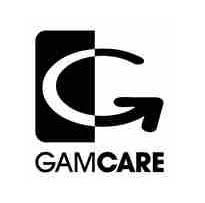This article takes a look at the various stages of a fixed limit Omaha Hi-Lo tournament and the different strategy considerations for each stage. We assume familiarity with the key concepts in Omaha hi-lo play such as scooping, quartering and reading the board, if you are not yet familiar with all of these check out our dedicated Omaha Hi-Lo Strategy section for more information.
The Early Stages
When stacks are ‘deep’ compared to the blinds focus should be on your ‘implied odds’, the chance of being paid off with many bets for a small pre-flop investment with a semi-speculative hand. Pots at this stage will be multi-way and many will be limped, meaning that you have a chance to see the flop with many ‘second tier’ starting hands in the hope of flopping a monster hand.
While your focus throughout the tournament should be on hands with scoop potential, some high-only hands can be played in the early stages. These should include nut-high potential and be played only from late position in multi-way limped pots. If you do flop a nut hand (or draw with no low potential) then you are in position to win at least half of the pot with against several opponents. If you miss then you can release your hand for a small pre-flop investment.
In the early stages there will be a proportionally larger number of inexperienced and otherwise weak opponents. Use this time to note who calls raises after the flop with 2nd or 3rd nut draws. If you do pick up a premium hand you can adjust your betting to maximize your chances of scooping a large pot against such players. Remember, these types (and players in general) are not folding for a single raise before the flop – see cheap flops with them and build the pot once you hit a nut draw.
The Middle Stages
As the blinds go up in relation to the stack sizes your focus should begin to shift away from implied odds and to the pot-odds being offered in any given situation. Stack sizes will also begin to have a significant influence on play. Speculative hands become less playable during the middle stages of a fixed-limit Omaha Hi-Lo tournament.
Key strategy considerations include being in control of the hands you do play at this stage. Instead of limping and playing pots multi-way you should look to raise those hands you are willing to play. Ensuring you have scoop potential becomes more important during the middle stages – opponents will have enough chips to see some flops and continue with their strong draws and getting quartered at this stage may have a significant impact on your stack.
High-only hands are often not playable during the middle stages, however these can sometimes be used deceptively against early position raisers – especially when they are known to be tight. Since tight players will almost certainly be raising low cards if they come in from early position a flop with little low potential (and even better some coordinated high cards) can look scary. Playing high cards here can give you the potential to check-raise an early raiser out of the pot, plus give you the backup of the nut high for those times you are called.
Bubble play in a fixed limit Omaha/8 tournament depends primarily on stack sizes. If there are one or more ‘micro-stacks’ at the tables then you should raise and re-raise to pressurize any medium-small stacks at every opportunity – especially when holding a big stack. If medium-stacked yourself you should not be scared of such confrontations when holding strong hands with nut draws to both sides of the pot. Since the larger stacks will be looking to ‘push the table around’ they may well have entered the pot with less than premium holdings.
The Later Stages
Play in the later stages is governed by a combination of the pot-odds and the stack sizes, both relative to the other players and in relation to the blinds and antes. You will need to be constantly aware of the number of hands which you can play through to the end for your own stack and those of opponents.
Many players will be feeling under pressure at this stage, to move up in the money or just to make the final table. Use this to your advantage by playing positive and aggressive poker. While you need a strong hand to call a bet (or raise) in the later stages, many of the speculative hands played early on now come back into use when you are the player betting and raising. The reason is that opponents are more likely to fold a hand, particularly in a ‘scary’ flop as the money increases – something that is less likely to happen when calling down would be a smaller proportion of their stacks. Again, if someone plays back at you then you need a strong hand (or nut draws) to continue.
Short-handed play once down to the final few players will generally be characterized by a bet or re-raise and everyone folding. The stacks will simply be too shallow to allow much flexibility in play. Take advantage of this by maintaining positive and aggressive poker – remember that will only 2 or 3 opponents the relative strength of hands is increased dramatically, those who wait for premium ‘both ways’ hands at this stage will quickly be blinded away.




